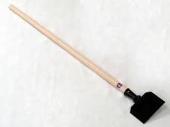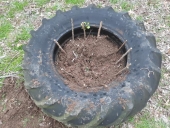
 7
7




Air and opportunity are all that stand between you and realizing your dreams!

 7
7




- Tim's Homestead Journal - Purchase a copy of Building a Better World in Your Backyard - Purchase 6 Decks of Permaculture Cards -
- Purchase 12x Decks of Permaculture Cards - Purchase a copy of the SKIP Book - Purchase 12x copies of Building a Better World in your Backyard
 6
6




Timothy Norton wrote:I've grown up with the same thing but heard the term "Girdle".
I have not found myself in a situation where girdling makes sense, but I know that it is a technique utilized for hundreds of years so there must be some good applications.
Air and opportunity are all that stand between you and realizing your dreams!
 2
2




Timothy Norton wrote:I've grown up with the same thing but heard the term "Girdle".
 2
2




John Daley Bendigo, Australia The Enemy of progress is the hope of a perfect plan
Benefits of rainfall collection https://permies.com/t/88043/benefits-rainfall-collection
GOOD DEBT/ BAD DEBT https://permies.com/t/179218/mortgages-good-debt-bad-debt
 2
2




Invasive plants are Earth's way of insisting we notice her medicines. Stephen Herrod Buhner
Everyone learns what works by learning what doesn't work. Stephen Herrod Buhner
 1
1




SKIP books, get 'em while they're hot!!! Skills to Inherit Property

 1
1




That is some serious sapwood, Mike. What species are you talking about? it would likely depend on the species on whether it would be effective or not to fail to go all the way through to the wood. A tree will bleed sap like crazy if it is girdled/ringed/belted. That sap would be necessary caloric the energy that would otherwise be used to grow leaves dumping down the lower tree to the ground. You'd have to experiment with the specific tree to see if you are cutting deep enough. If it fails to leaf out, you've gone deep enough. it may well be that all you need to do is cut into the sapwood all the way around to bleed it out.Mike Haasl wrote:Do you need to cut through the bark and cambium or all the way through the sap wood? On my trees, the sapwood is several inches thick.
+4 for "girdling"
"Never doubt that a small group of thoughtful, committed citizens can change the world; indeed, it's the only thing that ever has."-Margaret Mead "The only thing worse than being blind, is having sight but no vision."-Helen Keller










 1
1




"Never doubt that a small group of thoughtful, committed citizens can change the world; indeed, it's the only thing that ever has."-Margaret Mead "The only thing worse than being blind, is having sight but no vision."-Helen Keller
 1
1




SKIP books, get 'em while they're hot!!! Skills to Inherit Property










 2
2




"Never doubt that a small group of thoughtful, committed citizens can change the world; indeed, it's the only thing that ever has."-Margaret Mead "The only thing worse than being blind, is having sight but no vision."-Helen Keller

|
Straws are for suckers. Now suck on this tiny ad!
12 DVDs bundle
https://permies.com/wiki/269050/DVDs-bundle
|



